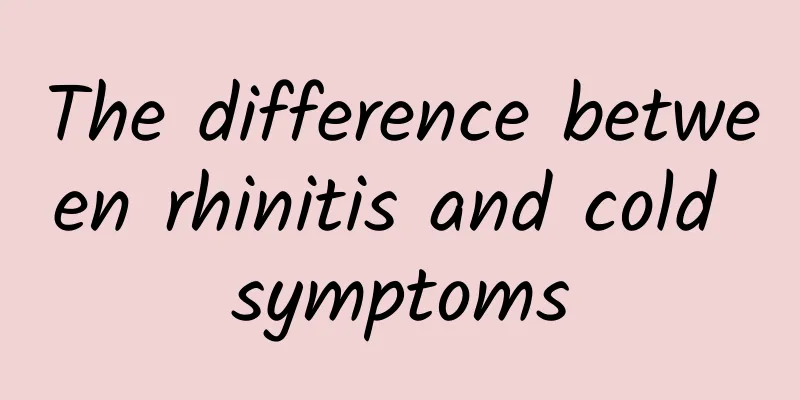The difference between rhinitis and cold symptoms

|
Rhinitis and colds are both relatively common among the government, especially some of their symptoms are often difficult to distinguish. Both are prone to sneezing and runny nose, and both are prone to fever. Of course, if you look closely, the difference between the two is quite large. Colds can occur all year round, while allergic rhinitis is more likely to occur in spring and autumn. The duration of the other two diseases varies, and the color of the snot can also be used to further judge. The difference between rhinitis and cold symptoms ■ When symptoms started Although colds can occur throughout the year, they are more common in spring and winter, and often occur several days after we are infected by a virus. The peak seasons for allergic rhinitis are spring and autumn, and symptoms often appear immediately after we come into contact with allergens. If symptoms such as itchy nose, sneezing, runny nose, and nasal congestion occur at the same time every year, it is more likely to be allergic rhinitis rather than a cold. ■ How long symptoms last A cold usually lasts 3 to 14 days. It is a self-limiting disease and may heal on its own even if you ignore it. Symptoms of allergic rhinitis may disappear within minutes or last for weeks, or longer if the allergens are not removed promptly or are not treated. ■ Color of snot Although the color of snot is not the key to distinguishing between colds and allergic rhinitis, it can still provide us with some clues. The nasal discharge of patients with colds will change. In the early stages of a cold, the nasal discharge is usually clear water-like. After 2-3 days, the nasal discharge begins to thicken, and later may turn yellow or green. If your child's nasal discharge is yellow or green, has been present for less than 10 days, and has not had sinusitis before, your doctor is more likely to suspect a cold or nasal infection. The nasal discharge of patients with allergic rhinitis is clear, and some of it flows out like water. However, if allergic rhinitis is not treated promptly for many years and secondary sinusitis occurs, yellow nasal discharge will appear. ■ Whether there is fever and muscle pain Although allergic rhinitis is also called "hay fever", it does not cause fever when it occurs. On the contrary, a cold may cause low fever, mild chills and headache, while influenza may cause obvious fever and body aches. |
<<: Early symptoms of lacunar infarction
>>: Symptoms of blocked blood vessels in the lower legs
Recommend
How does Traditional Chinese Medicine treat myopia?
With the continuous advancement of high technolog...
Clinical manifestations of cerebral leukodemyelination
White matter is an important substance in the hum...
murmur of tricuspid stenosis
I believe that many people do not know what tricu...
Why do wounds fester? Beware of bacterial infection
Bumps and minor wounds are normal in daily life. ...
What to do if you have yellow urine due to internal heat? There are good ways to reduce internal heat in your diet
Getting angry is a common symptom. Many people wi...
Migratory pain in the bones of the limbs
I believe that most people have experienced bone ...
What is Tethered Cord Syndrome?
Many diseases are caused by congenital and acquir...
What is the best way to treat tooth decay? Four ways to say goodbye to tooth decay
Teeth are an important part of the oral cavity. W...
Slow metabolism
If you want to have a healthy body, you need to h...
How to treat psoriasis
Psoriasis is really an annoying skin disease. If ...
Why do my palms sweat?
Sweating palms is very common for many friends, b...
Sore throat and cough
The two symptoms of throat pain and cough often o...
Can inherited metabolic diseases be cured?
Hereditary metabolic disease is a metabolic disor...
Does staying up late easily cause irritation?
Nowadays, staying up late seems to have become a ...
Treatment for clubfoot, what parents need to know
Clubfoot is a deformity that is more common in ne...









